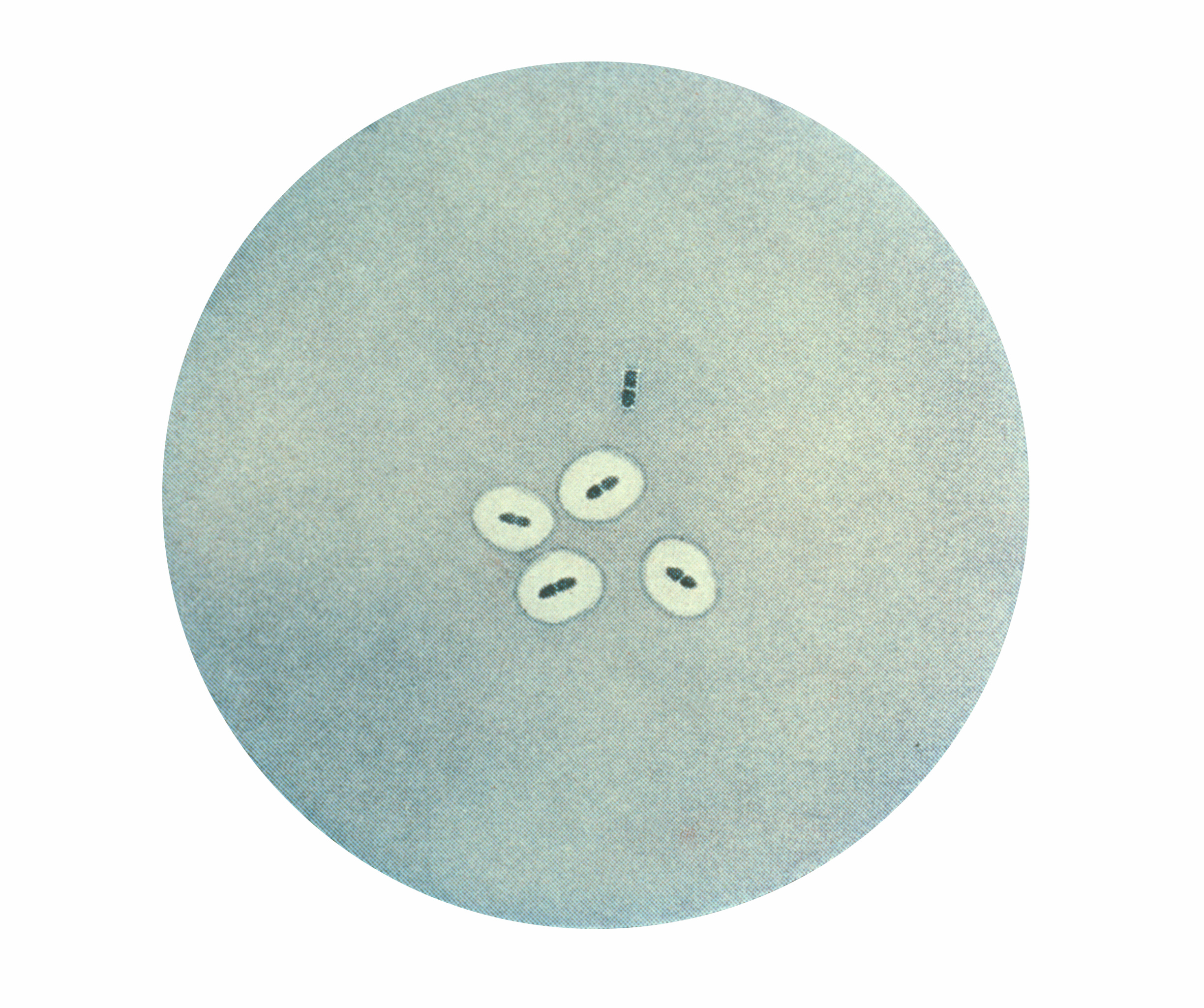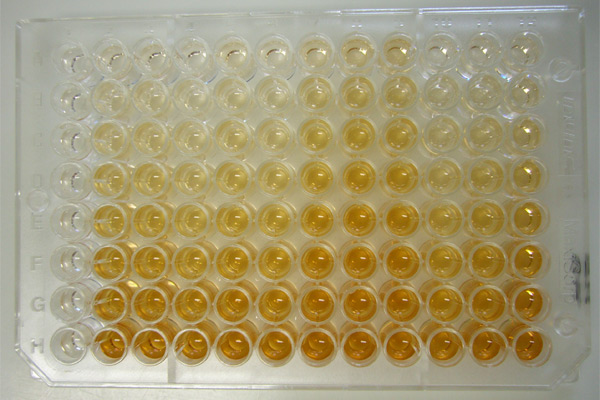|
Serogroup
A serotype or serovar is a distinct variation within a species of bacteria or virus or among immune cells of different individuals. These microorganisms, viruses, or cells are classified together based on their shared reactivity between their surface antigens and a particular antiserum, allowing the classification of organisms to a level below the species. A group of serovars with common antigens is called a serogroup or sometimes ''serocomplex''. Serotyping often plays an essential role in determining species and subspecies. The ''Salmonella'' genus of bacteria, for example, has been determined to have over 2600 serotypes. ''Vibrio cholerae'', the species of bacteria that causes cholera, has over 200 serotypes, based on cell antigens. Only two of them have been observed to produce the potent enterotoxin that results in cholera: O1 and O139. Serotypes were discovered in hemolytic streptococci by the American microbiologist Rebecca Lancefield in 1933. Procedure ''Serotyping' ... [...More Info...] [...Related Items...] OR: [Wikipedia] [Google] [Baidu] |
Vibrio Cholerae
''Vibrio cholerae'' is a species of Gram-negative bacteria, Gram-negative, Facultative anaerobic organism, facultative anaerobe and Vibrio, comma-shaped bacteria. The bacteria naturally live in Brackish water, brackish or saltwater where they attach themselves easily to the chitin-containing shells of crabs, shrimp, and other shellfish. Some strains of ''V. cholerae'' are pathogenic to humans and cause a deadly disease called cholera, which can be derived from the consumption of undercooked or raw marine life species or drinking contaminated water. ''V. cholerae'' was first described by Félix-Archimède Pouchet in 1849 as some kind of protozoa. Filippo Pacini correctly identified it as a bacterium and from him, the scientific name is adopted. The bacterium as the cause of cholera was discovered by Robert Koch in 1884. Sambhu Nath De isolated the cholera toxin and demonstrated the toxin as the cause of cholera in 1959. The bacterium has a flagellum (a tail like structure) at one ... [...More Info...] [...Related Items...] OR: [Wikipedia] [Google] [Baidu] |
Serotypes – Antibody Versus Antigen
A serotype or serovar is a distinct variation within a species of bacteria or virus or among immune cells of different individuals. These microorganisms, viruses, or cells are classified together based on their shared reactivity between their surface antigens and a particular antiserum, allowing the classification of organisms to a level below the species. A group of serovars with common antigens is called a serogroup or sometimes ''serocomplex''. Serotyping often plays an essential role in determining species and subspecies. The ''Salmonella'' genus of bacteria, for example, has been determined to have over 2600 serotypes. ''Vibrio cholerae'', the species of bacteria that causes cholera, has over 200 serotypes, based on cell antigens. Only two of them have been observed to produce the potent enterotoxin that results in cholera: O1 and O139. Serotypes were discovered in hemolytic streptococci by the American microbiologist Rebecca Lancefield in 1933. Procedure ''Serotyping' ... [...More Info...] [...Related Items...] OR: [Wikipedia] [Google] [Baidu] |
Quellung Reaction
The quellung reaction, also called the Neufeld reaction, is a biochemical reaction in which antibodies bind to the bacterial capsule of ''Streptococcus pneumoniae'', ''Klebsiella pneumoniae'', ''Neisseria meningitidis'', ''Bacillus anthracis'', ''Haemophilus influenzae'', ''Escherichia coli'', and ''Salmonella''. The antibody reaction allows these species to be visualized under a microscope. If the reaction is positive, the capsule becomes opaque and appears to enlarge. Quellung is the German word for "swelling" and describes the microscopic appearance of pneumococcal or other bacterial capsules after their polysaccharide antigen has combined with a specific antibody. The antibody usually comes from serum taken from an immunized laboratory animal. As a result of this combination, and precipitation of the large, complex molecule formed, the capsule appears to swell, because of increased surface tension, and its outlines become demarcated. The pneumococcal quellung reaction was fir ... [...More Info...] [...Related Items...] OR: [Wikipedia] [Google] [Baidu] |
Cholera
Cholera () is an infection of the small intestine by some Strain (biology), strains of the Bacteria, bacterium ''Vibrio cholerae''. Symptoms may range from none, to mild, to severe. The classic symptom is large amounts of watery diarrhea lasting a few days. Vomiting and muscle cramps may also occur. Diarrhea can be so severe that it leads within hours to severe dehydration and electrolyte imbalance. This can in turn result in Enophthalmia, sunken eyes, cold or cyanotic skin, decreased skin elasticity, wrinkling of the hands and feet, and, in severe cases, death. Symptoms start two hours to five days after exposure. Cholera is caused by a number of Serotype, types of ''Vibrio cholerae'', with some types producing more severe disease than others. It is spread mostly by Waterborne diseases, unsafe water and Foodborne illness, unsafe food that has been contaminated with human feces containing the bacteria. Undercooked shellfish is a common source. Humans are the only known host fo ... [...More Info...] [...Related Items...] OR: [Wikipedia] [Google] [Baidu] |
Human Leukocyte Antigen
The human leukocyte antigen (HLA) system is a complex of genes on chromosome 6 in humans that encode cell-surface proteins responsible for regulation of the immune system. The HLA system is also known as the human version of the major histocompatibility complex (MHC) found in many animals. Mutations in HLA genes may be linked to autoimmune diseases such as type I diabetes, and celiac disease. The HLA gene complex resides on a 3 Mbp stretch within chromosome 6, p-arm at 21.3. HLA genes are highly polymorphic, which means that they have many different alleles, allowing them to fine-tune the adaptive immune system. The proteins encoded by certain genes are also known as '' antigens'', as a result of their historic discovery as factors in organ transplants. HLAs corresponding to MHC class I ( A, B, and C), all of which are the HLA Class1 group, present peptides from inside the cell. For example, if the cell is infected by a virus, the HLA system brings fragments of ... [...More Info...] [...Related Items...] OR: [Wikipedia] [Google] [Baidu] |
Microorganism
A microorganism, or microbe, is an organism of microscopic scale, microscopic size, which may exist in its unicellular organism, single-celled form or as a Colony (biology)#Microbial colonies, colony of cells. The possible existence of unseen microbial life was suspected from antiquity, with an early attestation in Jain literature authored in 6th-century BC India. The scientific study of microorganisms began with their observation under the microscope in the 1670s by Anton van Leeuwenhoek. In the 1850s, Louis Pasteur found that microorganisms caused food spoilage, debunking the theory of spontaneous generation. In the 1880s, Robert Koch discovered that microorganisms caused the diseases tuberculosis, cholera, diphtheria, and anthrax. Microorganisms are extremely diverse, representing most unicellular organisms in all three domains of life: two of the three domains, Archaea and Bacteria, only contain microorganisms. The third domain, Eukaryota, includes all multicellular o ... [...More Info...] [...Related Items...] OR: [Wikipedia] [Google] [Baidu] |
Split Antigen
Split(s) or The Split may refer to: Places * Split, Croatia, the largest coastal city in Croatia * Split Island, Canada, an island in the Hudson Bay * Split Island, Falkland Islands * Split Island, Fiji, better known as Hạfliua Arts, entertainment, and media Films * ''Split'' (1989 film), a science fiction film * ''Split'' (2016 American film), a psychological horror thriller film * ''Split'' (2016 Canadian film), also known as ''Écartée'', a Canadian drama film directed by Lawrence Côté-Collins * ''Split'' (2016 South Korean film), a sports drama film * '' Split: A Divided America'', a 2008 documentary on American politics * ''The Split'' (film), a 1968 heist film * ''The Split'', or ''The Manster'', a U.S.-Japanese horror film Games * Split (poker), the division of winnings in the card game * Split (blackjack), a possible player decision in the card game Music Albums * ''Split'' (The Groundhogs album), 1971 * ''Split'' (Lush album), 1994 * ''Split'' (Patricia ... [...More Info...] [...Related Items...] OR: [Wikipedia] [Google] [Baidu] |
Immune System
The immune system is a network of biological systems that protects an organism from diseases. It detects and responds to a wide variety of pathogens, from viruses to bacteria, as well as Tumor immunology, cancer cells, Parasitic worm, parasitic worms, and also objects such as wood splinters, distinguishing them from the organism's own healthy biological tissue, tissue. Many species have two major subsystems of the immune system. The innate immune system provides a preconfigured response to broad groups of situations and stimuli. The adaptive immune system provides a tailored response to each stimulus by learning to recognize molecules it has previously encountered. Both use humoral immunity, molecules and cell-mediated immunity, cells to perform their functions. Nearly all organisms have some kind of immune system. Bacteria have a rudimentary immune system in the form of enzymes that protect against bacteriophage, viral infections. Other basic immune mechanisms evolved in ancien ... [...More Info...] [...Related Items...] OR: [Wikipedia] [Google] [Baidu] |
Genotyping
Genotyping is the process of determining differences in the genetic make-up (genotype) of an individual by examining the individual's DNA sequence using bioassay, biological assays and comparing it to another individual's sequence or a reference sequence. It reveals the alleles an individual has inherited from their parents. Traditionally genotyping is the use of DNA sequences to define biological Population, populations by use of molecular tools. It does not usually involve defining the genes of an individual. Techniques Restriction Fragment Length Polymorphisms A restriction fragment length polymorphism (RFLP) is a variation between different people at sites of the genome recognized by Restriction enzyme, restriction enzymes. DNA containing different restriction sites will be cut by bacterial restriction enzymes differently and this can be seen using gel electrophoresis. When running the sample through, a successfully cleaved sample will contain two bands, while the sample wit ... [...More Info...] [...Related Items...] OR: [Wikipedia] [Google] [Baidu] |
Nucleic Acid
Nucleic acids are large biomolecules that are crucial in all cells and viruses. They are composed of nucleotides, which are the monomer components: a pentose, 5-carbon sugar, a phosphate group and a nitrogenous base. The two main classes of nucleic acids are deoxyribonucleic acid (DNA) and ribonucleic acid (RNA). If the sugar is ribose, the polymer is RNA; if the sugar is deoxyribose, a variant of ribose, the polymer is DNA. Nucleic acids are chemical compounds that are found in nature. They carry information in cells and make up genetic material. These acids are very common in all living things, where they create, encode, and store information in every living cell of every outline of life forms, life-form on Earth. In turn, they send and express that information inside and outside the cell nucleus. From the inner workings of the cell to the young of a living thing, they contain and provide information via the nucleic acid sequence. This gives the RNA and DNA their unmistakable 'la ... [...More Info...] [...Related Items...] OR: [Wikipedia] [Google] [Baidu] |
Immunoassay
An immunoassay (IA) is a biochemical test that measures the presence or concentration of a macromolecule or a small molecule in a solution through the use of an antibody (usually) or an antigen (sometimes). The molecule detected by the immunoassay is often referred to as an "analyte" and is in many cases a protein, although it may be other kinds of molecules, of different sizes and types, as long as the proper antibodies that have the required properties for the assay are developed. Analytes in biological liquids such as blood plasma, serum or urine are frequently measured using immunoassays for medical and research purposes. Immunoassays come in many different formats and variations. Immunoassays may be run in multiple steps with reagents being added and washed away or separated at different points in the assay. Multi-step assays are often called separation immunoassays or heterogeneous immunoassays. Some immunoassays can be carried out simply by mixing the reagents and samples an ... [...More Info...] [...Related Items...] OR: [Wikipedia] [Google] [Baidu] |






